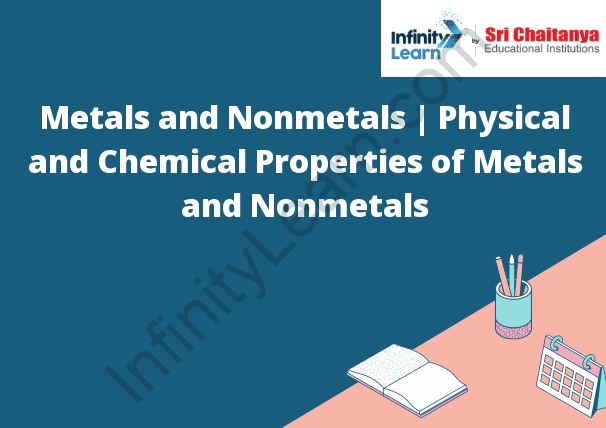Table of Contents
Metals and Nonmetals – Types, Properties and Differences ; Comparison of Physical Properties of Metals and Non-metals ; Comparison of Chemical Properties of Metals and Non-metals ; Calcination and Roasting ;
Metallurgy
Metals and nonmetals are two groups of elements that are found on the periodic table. Metals are elements that are shiny, malleable, and ductile. Nonmetals are elements that are dull, brittle, and nonconductive.
The physical properties of metals and nonmetals differ in many ways. Metals are shiny because they reflect light. Nonmetals are dull because they do not reflect light. Metals are malleable, which means they can be beaten into thin sheets. Nonmetals are brittle, which means they can break easily. Metals are ductile, which means they can be drawn into thin wires. Nonmetals are not ductile and cannot be drawn into thin wires.
The chemical properties of metals and nonmetals also differ. Metals are good conductors of electricity and heat. Nonmetals are poor conductors of electricity and heat. Metals react with oxygen to form oxides. Nonmetals do not react with oxygen to form oxides. Metals react with other metals to form alloys. Nonmetals do not react with other metals to form alloys.
Metals and nonmetals are different in other ways. Metals are denser than nonmetals. Metals are harder than nonmetals. Nonmetals are more reactive than metals.
Metals and nonmetals are both used in different ways. Metals are used in

The Periodic Table
The periodic table is a table of the chemical elements organized in order of increasing atomic number. The table is divided into several rows (periods) and columns (groups). The elements are arranged so that elements with similar chemical properties are in the same column.
Metals
are elements that are found on the left side of the periodic table. They are good conductors of electricity and heat. Metals are usually hard and shiny. They are usually malleable, which means they can be hammered into thin sheets.
Physical Properties
of Matter
The physical properties of matter are its mass, volume, density, and temperature.
Chemical Properties
Halogens are all elements that have seven electrons in their outermost shell. This makes them highly reactive because they are looking to fill up their outer shell. Chlorine is a yellow-green gas, while iodine is a black solid. Bromine is a red-orange liquid.
Non-Metals
Non-metals are elements that are not metals. There are 17 non-metals in the periodic table. Non-metals are generally found in the left side of the periodic table.
Physical Properties
The physical properties of a material determine its appearance, behavior, and characteristics.
Appearance
The appearance of a material is determined by its color, texture, and luster.
Color
The color of a material is determined by the wavelengths of light that it reflects.
Texture
The texture of a material is determined by the size and shape of its individual particles.
Luster
The luster of a material is determined by the amount of light that it reflects.
Chemical Properties
Chemical Properties
Chemical properties are those that describe how a substance behaves when it interacts with other substances. In general, a substance can be classified as an acid, a base, or a salt, depending on how it reacts with other substances.
Acid
An acid is a substance that reacts with bases to produce a salt and water. Acids are typically sour in taste and have a pH of less than 7.0.
Base
A base is a substance that reacts with acids to produce a salt and water. Bases are typically bitter in taste and have a pH of greater than 7.0.
Salt
A salt is a substance that is formed when an acid and a base react with each other. Salts are typically soluble in water and have a neutral pH.









